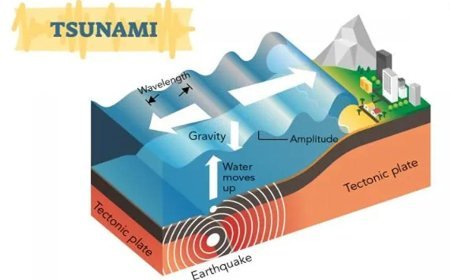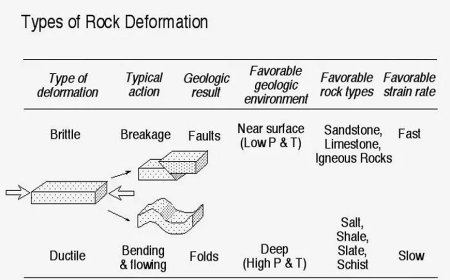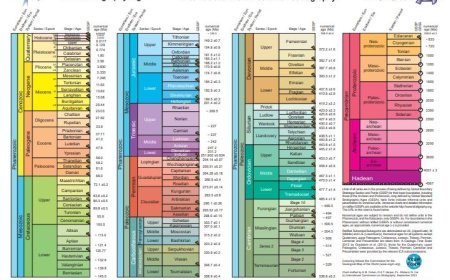RIFT VALLEY
Rift valleys form where tectonic plates stretch and create deep valleys.

The Rift Valley
- A rift valley is a long, narrow valley that results from the depression of a block of earth's crust between two parallel faults or groups of faults.
- Both on land and at the bottom of the ocean, rift valleys are a result of seafloor spreading.
- Since tectonic forces rather than erosion are what create rift valleys, they differ from river and glacial valleys.
- The sinking of a river valley's floor is what creates a rift valley.
- On a divergent plate boundary, crustal expansion or spreading apart of the surface creates a rift valley, which erosion forces then deepen.
- Rift valleys arise when two big chunks of the earth's crust separate.
- Another theory holds that in a compressional rift with reversal faults all around, the over-thrust peripheral masses push the center block downward.
- Transform faults, where tectonic plates collide, may also produce rift valleys.
- The San Andreas Fault, which stretches across California and Baja California in Mexico, created the Salton Trough, a rift valley.
- The San Andreas fault is a transform fault that divides the northward movement of the Pacific plate from the southern movement of the North American plate.
An Example of a Rift Valley
- The East African Rift, the Baikal Rift Valley, the West Antarctic Rift, and the Rio Grande Rift Valley are the world's largest active continental rift valleys.
History of the Rift Valley Studies
- After the work of many explorers, including the famous David Livingstone, in the middle to late 1800s, Austrian geologist Eduard Suess came up with the idea of an East African rift fracture.
- In 1896, British geologist John Walter Gregory named it the Great Rift Valley of East Africa.
- Gregory recognized the GRV as the Afro-Arabian rift system in 1921, characterizing it as a series of graben basins in western Asia that encompasses the valleys of the Red and Dead Seas.
Great Rift Valley
-
-
- The "Great Rift Valley System," which stretches from the Middle East to Mozambique in the south, is the world's most well-known rift valley.
- This geologically active region is rife with volcanoes, hot springs, geysers, and earthquakes.
- The Great Rift Valley, on the other hand, is now more of a cultural idea than a scientific one.
- The "system's" rift valleys are all related; however, they aren't all part of the same unit.
The Jordan Rift Valley is located in the northern portions of the system. - The Jordan Rift Valley stretches from the Golan Heights, near Israel's border with Syria and Lebanon, to the Dead Sea and then to the Gulf of Aqaba, which links the Sinai Peninsula and the Arabian Peninsula.
- The Great Rift Valley is the greatest example of a divergent boundary.
- The northernmost section of the Rift forms Lebanon's Beqaa Valley.
- The Great Rift Valley, which divided the previous Ethiopian highlands in two, follows the fault southwestward.
- The Eastern Rift and the Western Rift divide the valley in eastern Africa. Some of the world's deepest lakes are found in the Albertine Rift, also known as the Western Rift.
- One of the world's most active and dangerous volcanoes may be found in the Great Rift Valley in the eastern Democratic Republic of the Congo.
The location of the Great Rift Valley
- A physical and geographical feature that runs for 5,000 kilometers from northern Syria in southwest Asia to central Mozambique in east Africa is called the Great Rift Valley.
- The valley's width varies between thirty and one hundred kilometers, while its depth varies between a few hundred and thousands of meters.
- The Red Sea Rift Valley is linked to the Jordan Rift Valley to the south. Millions of years ago, the Arabian Peninsula was linked to Africa.
- As a result of seafloor spreading, the Arabian and African plates migrated apart. When the Indian Ocean flooded the rift valley between the continents, it created the Red Sea.
- The Sinai Peninsula's triangle currently connects Africa and Asia.
- The Red Sea Rift will ultimately join the Mediterranean and Red Seas, separating Africa and Asia altogether.
Rift Valleys of Africa
- The East African Rift System is a geologic wonder of the globe, a location where tectonic forces are actively striving to split apart ancient plates in order to form new ones.
- A rift is a growing break in the earth's surface, or more precisely, a long basin formed by opposing, steeply dropping normal faults.
- The East African Rift's two primary rift valley systems are the Gregory Rift and the Western Rift.
- There are many volcanoes in the rift valleys. Some of them are Mount Kenya (a dead stratovolcano) in Kenya, Ol Doinyo Lengai in Tanzania, Mount Kilimanjaro in Tanzania (a dormant stratovolcano), and Mount Nyiragongo in the Democratic Republic of the Congo.
-
What's Your Reaction?



































